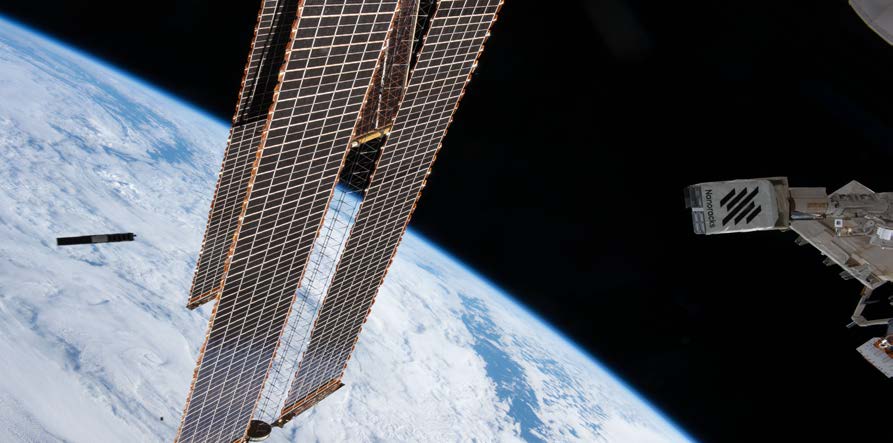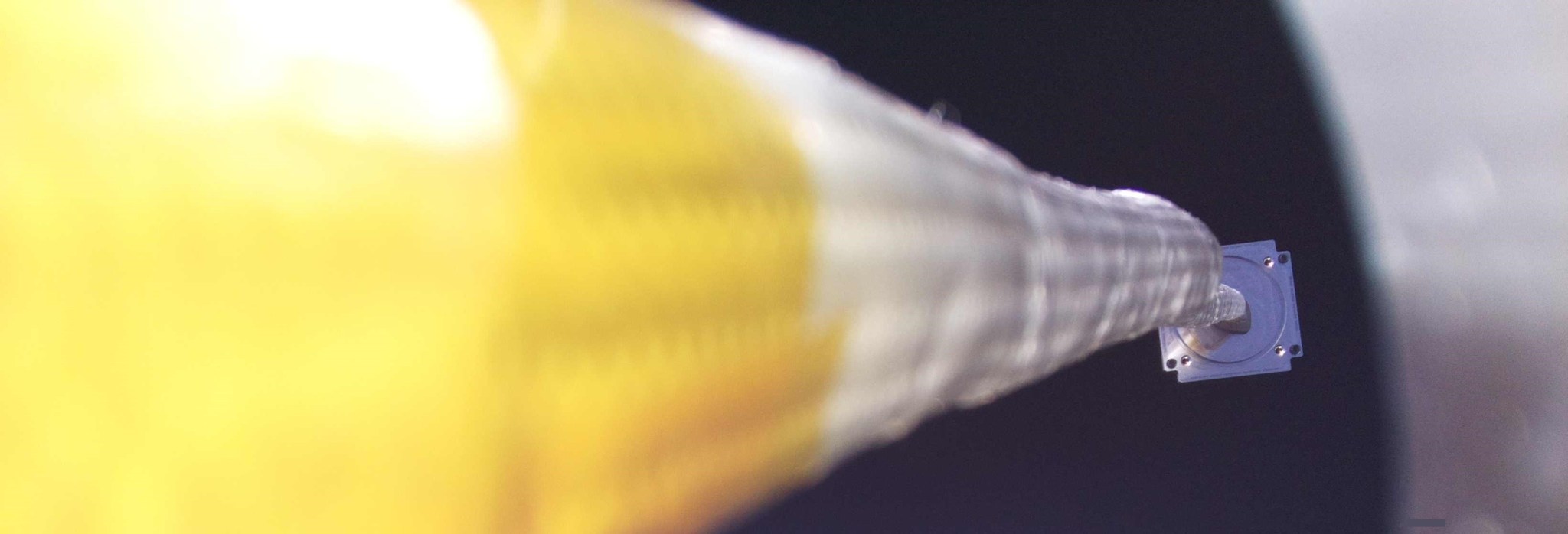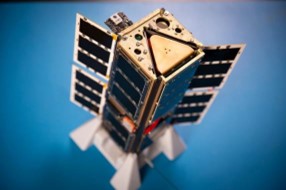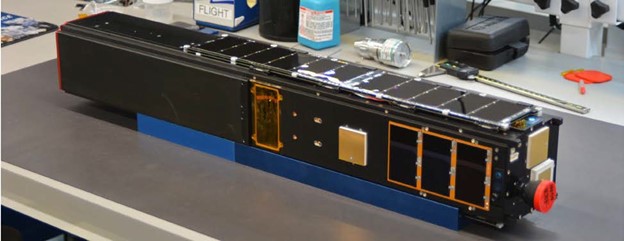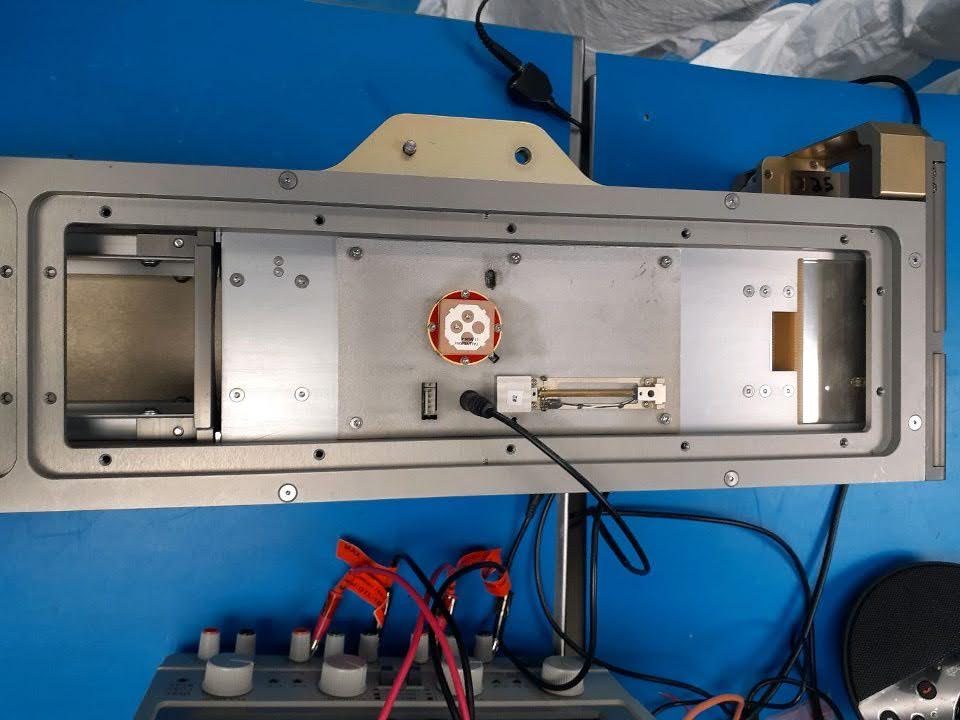Despite their small size, the satellites launching through NASA’s CubeSat Launch Initiative (CSLI) missions have a big impact, creating access to space for many who might not otherwise have the opportunity. One recent mission tells the story of four teams of researchers and engineers who conceived, built, launched, and collected data from these shoebox-sized satellites, helping them answer a host of questions about our planet and the universe.
The teams’ CubeSats launched as part of the ELaNa 38 (Educational Launch of Nanosatellites) mission, selected by CSLI and assigned to the mission by NASA’s Launch Services Program. A little more than a month after launching aboard SpaceX’s 24th commercial resupply services mission from NASA’s Kennedy Space Center in Florida, the CubeSats were deployed from the International Space Station on Jan. 26, 2022.
Being selected by CSLI was an inspirational once-in-a-lifetime opportunity for more than 100 undergraduate students who worked on ELaNA 38’s Get Away Special Passive Attitude Control Satellite (GASPACS) CubeSat.
“None of us had ever worked on a project like this, much less built a satellite on our own,” said Jack Danos, team coordinator of Utah State University’s Get Away Special, or GAS Team. “When we first heard the audio beacon from our satellite in orbit, we all cheered.”
It took the GAS Team nearly a decade to develop and build GASPACS – the team’s first CubeSat – with many team members graduating in the process. But the team’s focus remained the same – to deploy and photograph a meter-long inflatable boom, known as the AeroBoom, from its CubeSat in Low Earth orbit.
“When we saw that first photo come through, we were blown away, speechless,” Danos said. “This had been a decade of work and learning everything required for a real satellite mission – a lot of us got skills that we never could have gotten in a normal school environment.”
The team of college students who built Georgia Tech’s Tethering and Ranging mission (TARGIT) developed it to test an imaging LiDAR system capable of detailed topographic mapping from orbit. TARGIT’s students machined the CubeSat components themselves and integrated several new technologies into the final flight system.
“CSLI was a great window into how NASA works and the formal processes to ensure the hardware that gets launched meets requirements,” said Dr. Brian Gunter, principal investigator on the Georgia Institute of Technology TARGIT CubeSat. “Our spacecraft would not have made it to orbit without this program.”
Prior to launch, the Georgia Tech team worked closely with NASA’s CSLI team, gained considerable industry experience, and delivered a flight-ready spacecraft, even after COVID forced a full shutdown of activity for an extended period, during which many key team members graduated.
“Just getting the spacecraft ready and delivered was the greatest achievement for the group and was a nice example of teamwork and resiliency from the students,” Gunter said.
Not all ELaNa 38’s CubeSats were student-built. With the goal of studying processes affecting Earth’s upper atmosphere and ionosphere, The Aerospace Corporation’s Daily Atmospheric and Ionospheric Limb Imager (DAILI) CubeSat employed an ambitious forward sunshade that was key to DAILI’s ability to examine atmospheric variations during daytime. As perhaps the most sophisticated sunshade ever flown on a CubeSat, it reduced intense scattered light from the Sun, the Earth’s surface, and low-altitude clouds by a factor of almost a trillion.
“Not only did we have a shade that occupied over half of the space we had on the CubeSat – we also needed room for the optics, the detector, and for the CubeSat bus,” said Dr. James Hecht, senior scientist at Ionospheric and Atmospheric Sciences at Aerospace and DAILI principal investigator. “The effectiveness of the shade depended greatly on the length of the shade to the angular field of view of DAILI. It was a challenge, but it worked.”
Rounding out the ELaNa 38 flight was the Passive Thermal Coating Observatory Operating in Low Earth Orbit (PATCOOL) satellite, sponsored by NASA’s Launch Services Program and developed by the Advanced Autonomous Multiple Spacecraft Laboratory at the University of Florida. PATCOOL tested a highly reflective surface coating called “solar white” to measure its efficiency as way to passively cool components in space.
Through ELaNa 38’s four small satellites, hundreds of individuals – many developing and launching spacecraft for the first time – achieved access to space. For NASA, increasing access to space and making data and innovations accessible to all also serves to reinforce the future of the country’s space industry.
“This is an opportunity that you just can’t get anywhere else – the ability to send something into space, get the ride paid for, and form relationships within the industry,” Danos said. “There are so many members of the team that went into the space industry after the mission – a mission we literally couldn’t have done without NASA’s CSLI.”


























